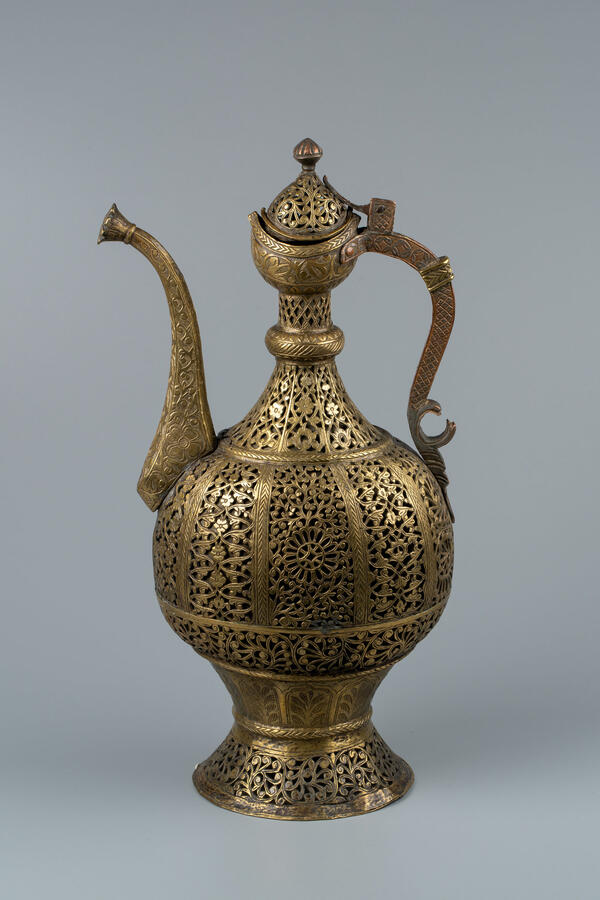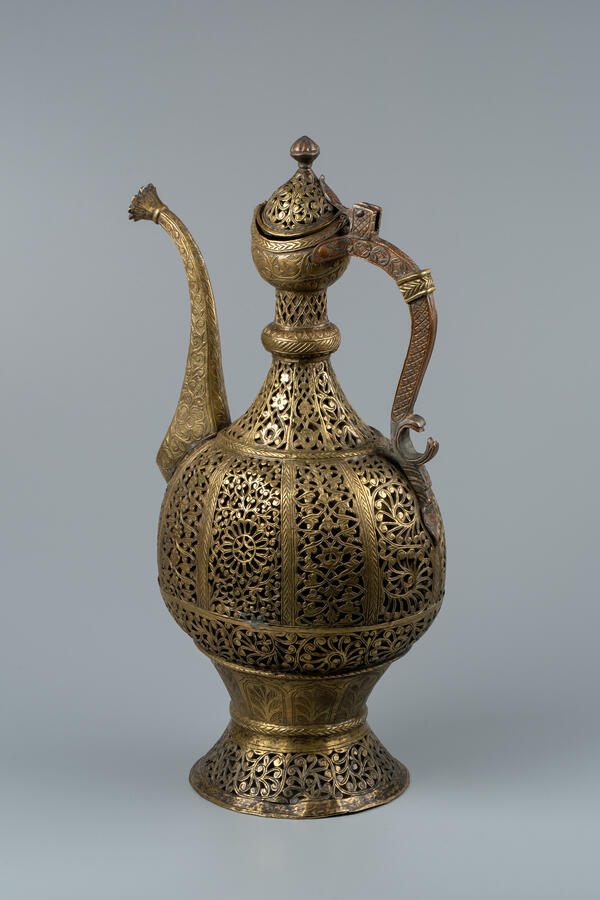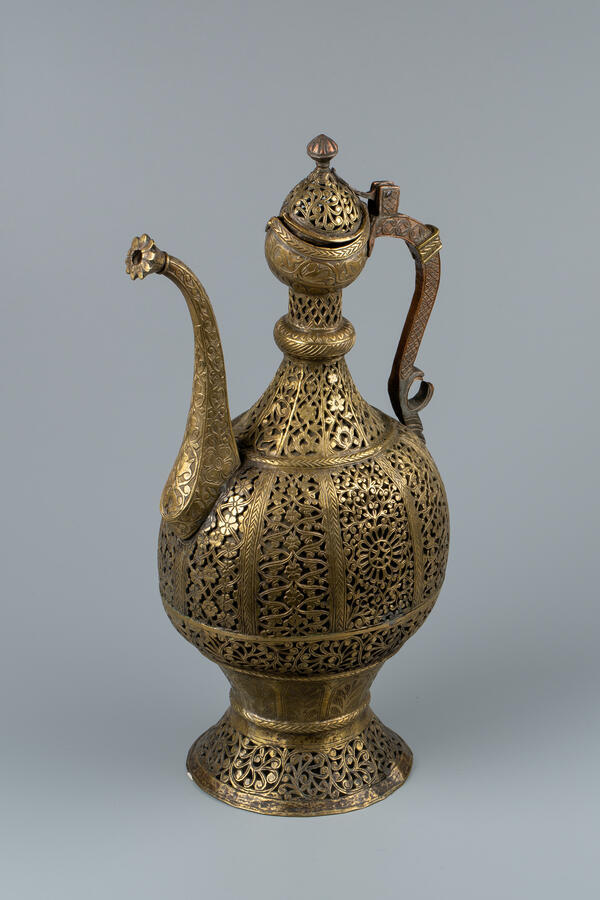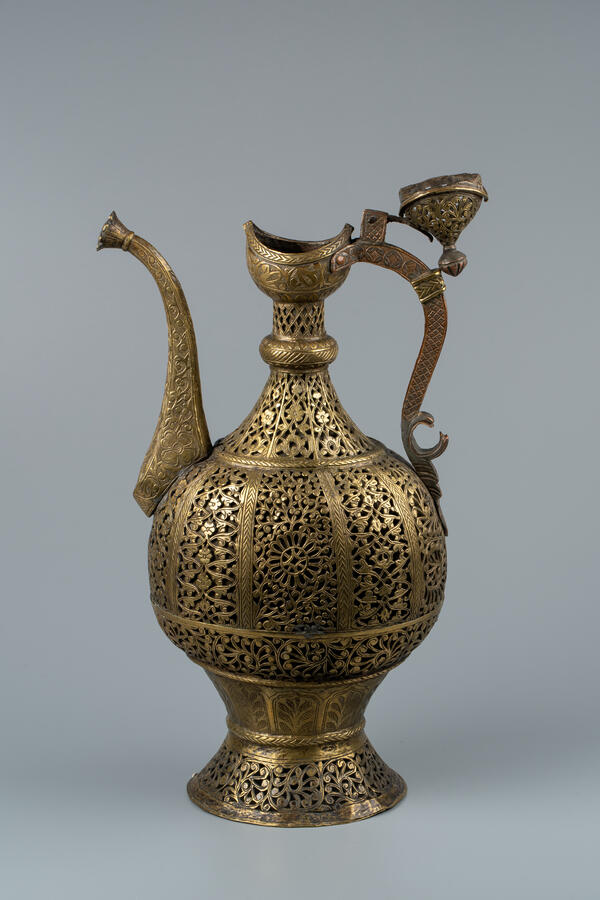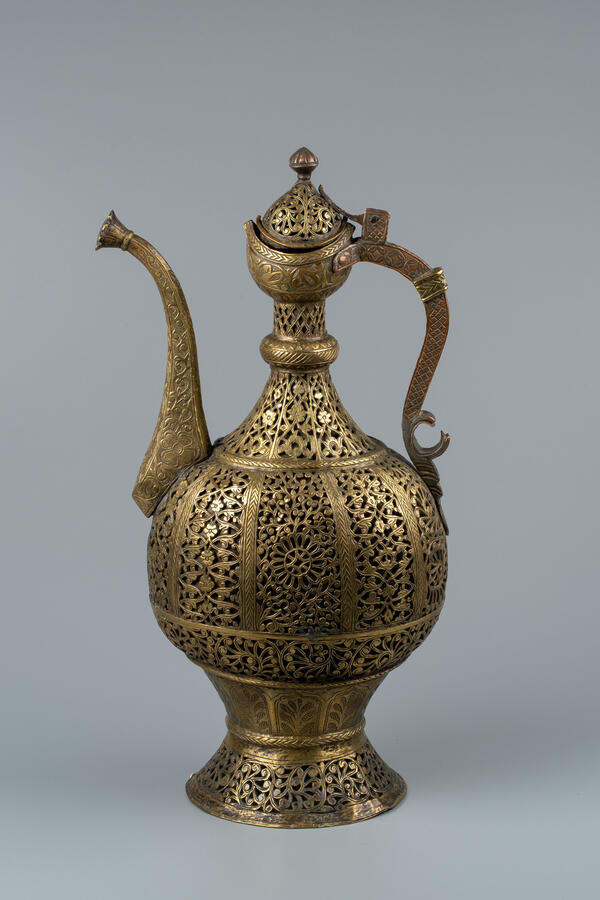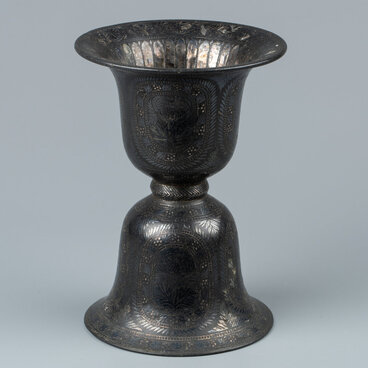The Samara Regional Art Museum presents an elegantly decorated ewer or oftoba. An oftoba is a narrow-necked vessel, a water container with a spout, handle and lid, used in many Eastern countries primarily for washing one’s face, hands and other body parts. Muslims still use these jugs for purposes of ablution (a ceremonial act of washing one’s body). And many probably have a beautiful antique jug in the house, which was passed down to them.
In the 18th and 19th centuries, jugs made of copper and brass turned into exquisite works of decorative and applied arts. The surface of the vessel was usually decorated with chasing (or repoussé), engraving with niello, enamel or gilding. The ornament plays a major role in Islamic arts. The jugs were mainly decorated with vegetal motifs, which are traditional for Islamic culture.
The jug from the Samara Art Museum is not only engraved, but also decorated with openwork chasing — an original method of metalworking used in jewelry. Openwork repoussé is one of the most beautiful and spectacular types of chased art, which looks like real lace made on metal. The main aspect in such chased composition is the rhythm of the gaps and the pattern itself, which creates the openwork design. Carvers sometimes use compasses to create the outline of the pattern on the surface of an item. However, experienced artists who know hundreds of patterns do not make any preliminary drawings and immediately start embossing them with a chisel.
Openwork chasing differs from contour chasing in that the background of an ornament or any other image is carved by using special chisels or punchers. The artist works on the background without removing the plate from the resin, after it is refined. It is better to start repoussé from the middle and go to the edges or frontally from one edge to the other. The item is removed from the resin after chasing. It is especially necessary to carefully anneal openwork designs. Then it is meticulously cleaned — the burnt resin is taken out. The sharp burrs formed after chasing are filed with suitable tools.
In the 18th and 19th centuries, jugs made of copper and brass turned into exquisite works of decorative and applied arts. The surface of the vessel was usually decorated with chasing (or repoussé), engraving with niello, enamel or gilding. The ornament plays a major role in Islamic arts. The jugs were mainly decorated with vegetal motifs, which are traditional for Islamic culture.
The jug from the Samara Art Museum is not only engraved, but also decorated with openwork chasing — an original method of metalworking used in jewelry. Openwork repoussé is one of the most beautiful and spectacular types of chased art, which looks like real lace made on metal. The main aspect in such chased composition is the rhythm of the gaps and the pattern itself, which creates the openwork design. Carvers sometimes use compasses to create the outline of the pattern on the surface of an item. However, experienced artists who know hundreds of patterns do not make any preliminary drawings and immediately start embossing them with a chisel.
Openwork chasing differs from contour chasing in that the background of an ornament or any other image is carved by using special chisels or punchers. The artist works on the background without removing the plate from the resin, after it is refined. It is better to start repoussé from the middle and go to the edges or frontally from one edge to the other. The item is removed from the resin after chasing. It is especially necessary to carefully anneal openwork designs. Then it is meticulously cleaned — the burnt resin is taken out. The sharp burrs formed after chasing are filed with suitable tools.

